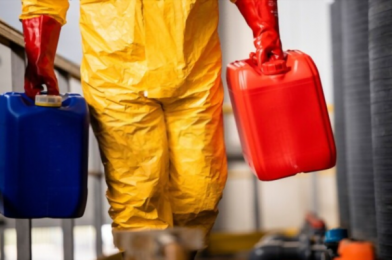Course Description
This four hour course provides an overview of the various air emission control technologies while introducing students to the environmental, technical and legal aspects of pollution prevention.
Today, environmental management is moving toward pollution reduction and prevention strategies. This movement represents a major shift in policy from a regulation/control model to a technical assistance and education model. Managers in public and private sectors must develop new skills that allow them to identify opportunities for pollution prevention, develop strategies for effecting change in businesses and link those strategies to available technologies. Planning for pollution prevention is recognized as a vital component of this process.
This course covers the preparation and submission of the permit application while identifying the purpose and requirements of permits as defined in Title V. This course also addresses the identification of the types of air permits (permit exemption, construction permits, minor source permits, synthetic minor permits and major source permits). In addition we will review the maximum and best available control technology standards; compliance for pollution prevention; lowest available control technology; and reasonably available control technology. This course is beneficial for permit writers and inspectors who must read and interpret permit conditions and perform inspections of permitted sources. The course takes each student from an introductory level to an advanced level..
How You Will Benefit
- Understand the national and state legislative mandates and their requirements for pollution prevention.
- Understand multi-media pollution prevention assessments and analysis.
- Understand procedures and requirements for pollution prevention planning in other states.
- Understand the methods and procedures which are used to prepare air quality permits.
- Understand and identify various Pollution Control Technologies.
- Understand the rules, regulations and requirements associated with maximum achievable control technology (MACT), best available control technology (BACT), reasonably available control technology (RACT) and lowest achievable emission rate (LAER)
- Define attainment and non-attainment areas as described by the Clean Air Act.
- Define key terms associated with Title I compliance requirements, including National Ambient Air Quality Standards (NAAQS), degrees of non-attainment, major source, Criteria Air Pollutants, and New Source Performance Standards (NSPS).
- Identify requirements for attainment and maintenance of National Ambient Air Quality Standards as defined in Title I.
- Identify requirements for limiting Hazardous Air Pollutants as defined in Title III.
- Define key terms associated with Title III compliance requirements, including Hazardous Air Pollutants, Maximum Air Control Technology, and Risk Management Planning, and NESHAP’S.
- Identify purpose and requirements of Operating Permits as defined in Title V.
- Identify processes for determining air-permitting compliance.
- Identify types of air permits from degree of least stringency to highest, including permit exemption, construction permits, minor source permits, synthetic minor permits, and major source permits.
- Identify and select appropriate control technologies for existing and/or new facilitie



